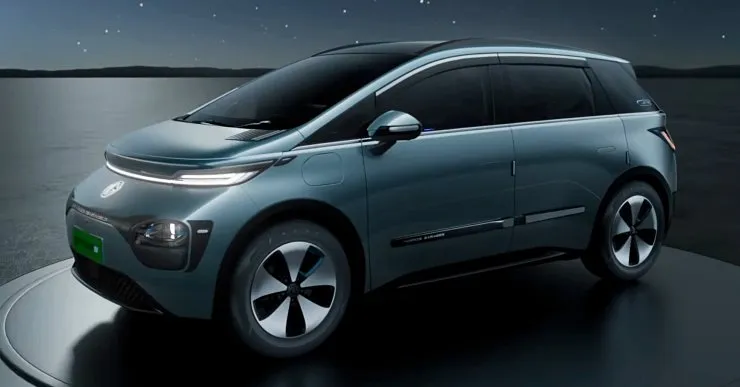The automotive industry is undergoing significant transformations, marked by strategic decisions from major manufacturers, regulatory advancements, and shifting consumer preferences. This article delves into the latest developments shaping the global automotive landscape.
Ford’s Strategic Restructuring in the UK
In a move to align with evolving market demands, Ford has closed over 50 retail dealership sections across the UK. This initiative, part of a broader plan initiated over four years ago, aims to reduce the number of sales outlets from 395 in 2020 to approximately 210. Despite the closures, all but three dealerships have retained their status as authorized repairers. Ford’s strategy focuses on enhancing profitability by consolidating its network, emphasizing larger market area dealers, and strengthening its presence through Transit Centres.
Enhanced Safety Regulations in the U.S.
The U.S. National Highway Traffic Safety Administration (NHTSA) is set to update vehicle safety ratings starting with the 2026 model year. The new regulations will incorporate advanced driver-assistance technologies, including pedestrian automatic emergency braking, lane-keeping assist, and blind spot warnings. This initiative aims to improve safety for both vehicle occupants and pedestrians, encouraging automakers to adopt these technologies more rapidly. The updated standards are expected to save lives and prevent thousands of injuries annually.
Stellantis’ Commitment to French Manufacturing
Carlos Tavares, CEO of Stellantis, has reassured the future of the company’s French factories during recent visits. He confirmed that each site is projected to operate at least until 2028, with most expected to continue until 2030-2032. Tavares emphasized the importance of maintaining competitive production costs and announced plans for decarbonization projects. The successful production of the new C5 Aircross SUV in Rennes is crucial, with an annual sales target of 60,000 to 80,000 vehicles.
Debate Over Automatic Emergency Braking Standards
The NHTSA has declined a request from the Alliance for Automotive Innovation to reconsider a rule mandating advanced automatic emergency braking systems in nearly all new cars and trucks by 2029. The rule requires vehicles to stop and avoid collisions at speeds up to 62 miles per hour. Despite concerns about current technological capabilities and potential cost increases, the NHTSA remains firm on implementing the rule, aiming to enhance road safety significantly.
Audi’s Rebranding Initiative
Audi has unveiled a new logo for its latest electric vehicle, replacing its iconic four rings with the letters spelling “Audi.” This rebranding effort targets young drivers and is part of a partnership with Chinese automotive giant SAIC to launch a new sub-brand tailored to the Chinese market. The decision aims to leverage looser restrictions on autonomous vehicles in China, emphasizing advanced driver-assistance technologies. The new logo has sparked mixed reactions on social media, with some users finding it humorous and others noting its resemblance to other Chinese EV brands.
Shifts in Australia’s Vehicle Market
Recent data from the Australian Automobile Association indicates a significant decline in battery-powered electric vehicle (EV) sales, with a 25% drop, reducing their market share to 6.57%. Conversely, hybrid models have gained popularity, experiencing a 3.3% increase in sales and capturing a 16.70% market share. Plug-in hybrids also saw a substantial rise in sales by 56%, achieving a 2.5% market share. This trend suggests that Australian consumers are currently favoring hybrid vehicles over pure electric options.
Price Adjustments in the Indian Automotive Sector
Several automakers in India have announced price increases effective from January 2025. Tata Motors plans to raise prices of its trucks and buses by up to 2%, and its passenger vehicles, including electric models, by up to 3%, citing rising input costs. Similarly, Audi and JSW MG Motor India have announced price hikes of up to 3% across their model ranges. These adjustments aim to offset inflationary pressures and ensure sustainable growth for the manufacturers and their dealer partners.
Advancements in India’s Electric Vehicle Market
India’s electric vehicle (EV) market is experiencing notable developments. Ola Electric has expanded its network to 4,000 stores nationwide, extending beyond metros and Tier I and II cities into smaller towns and tehsils. These network stores will also function as service centers, enhancing accessibility for consumers. Additionally, Maruti Suzuki is set to showcase a production-ready electric Vitara at the upcoming Bharat Mobility Global Expo 2025, reflecting the company’s commitment to EV innovation.
Conclusion
The automotive industry is at a pivotal juncture, with manufacturers adapting to regulatory changes, consumer preferences, and technological advancements. Strategic restructuring, enhanced safety standards, rebranding efforts, and a focus on electric and hybrid vehicles are shaping the future of mobility worldwide.

